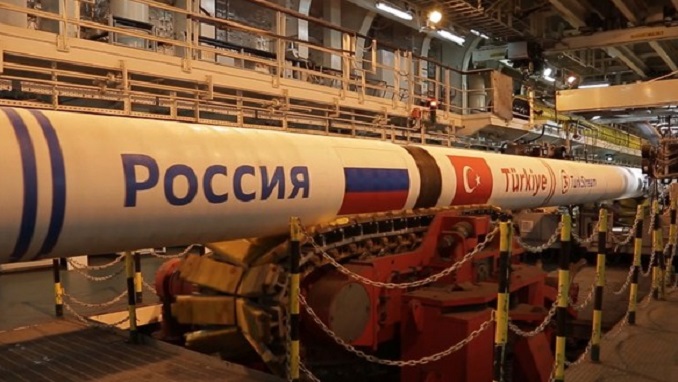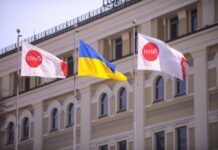When Russian President Vladimir Putin visits Istanbul on Wednesday, he will be doing more than officially opening a new export pipeline — he will be getting some more closure on his longstanding dream to end Moscow’s dependence on Ukraine in getting natural gas to Europe, RFE/RL writes in an analysis of TurkStream’s meaning for Russia’s gas exports.
Russia has been seeking to cut gas transit through Ukraine since the mid-2000s, and the $7.8 billion TurkStream project is a big part of that strategic goal, the news outlet writes.
The pipeline, which transits the Black Sea and surfaces outside Istanbul, took five years to complete and is one of two major new natural-gas export routes totaling nearly $20 billion that Russia expects to go online this year.
TurkStream also marks a major achievement for Turkish President Recep Tayyip Erdogan, who has long sought to turn his country into an energy hub and will stand alongside Putin at the January 8 inauguration ceremony.
The pipeline will carry 31.5 billion cubic meters (bcm) of Russian natural gas annually to Turkey’s western province, with half of that volume to be further exported to the Balkans and Central Europe, including Bulgaria, North Macedonia, Serbia, and Hungary.
Russia, which exported nearly 200 bcm to Europe in 2019, had been supplying gas to the Balkans and Turkey through an overland route transiting Ukraine, Moldova, and Romania. That gas will now be rerouted through TurkStream, which consists of two lines stretching 930 kilometers each under the Black Sea from just outside the Russian town of Anapa.
Russia twice shut off gas to Ukraine — in the dead of winter in 2006 and 2009 — amid price disputes that erupted after pro-Western leaders came to power in Kyiv.
Ukraine had been earning about $3 billion annually in transit fees from Moscow, providing a key source of revenue for the country’s struggling economy even as its relations with the Kremlin deteriorated sharply following the 2014 Euromaidan protests and Russia’s subsequent seizure of the Crimean Peninsula and support for a separatist conflict in eastern Ukraine.
Russia first sought to build a more ambitious export project to Europe via the Black Sea prior to TurkStream. The South Stream project, proposed in 2007, would have carried 63 bcm a year to Bulgaria via four lines under the sea.
The European Parliament adopted a resolution in 2014 opposing the project on the grounds it violated European Union energy rules. Bulgaria is a member of the EU.
Russia completed Nord Stream 1 under the Baltic Sea to Germany in 2011 to reroute gas around Ukraine and is expected to launch the $11 billion Nord Stream 2 project before the end of the year. The two pipelines have a combined capacity of 110 bcm.
Washington last month imposed sanctions on Nord Stream 2, putting its launch date in doubt.












